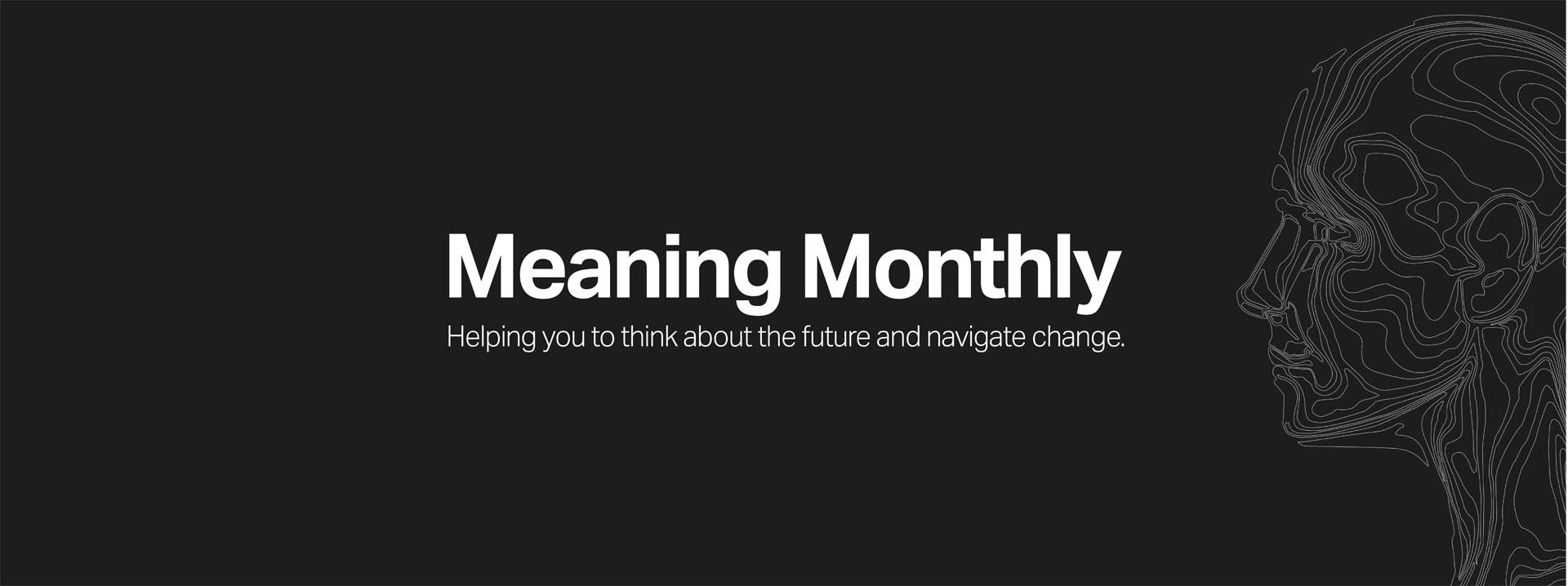
March 2021
The start of 2021 has seen an abundance of exciting new innovations and trends across the home and health sectors. This month, our strategy team have analysed these releases, understanding their meanings and what they might signal for the future.
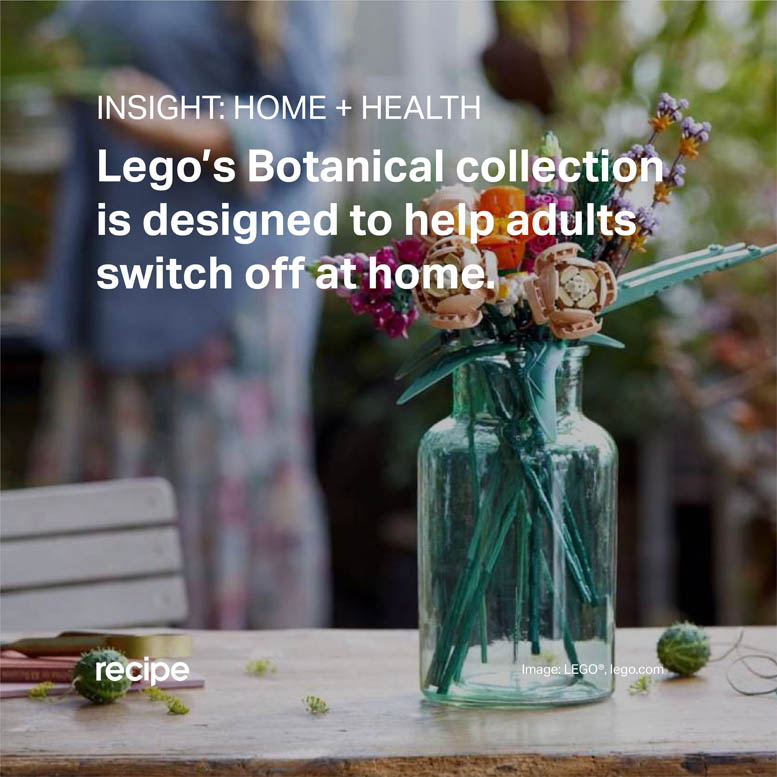
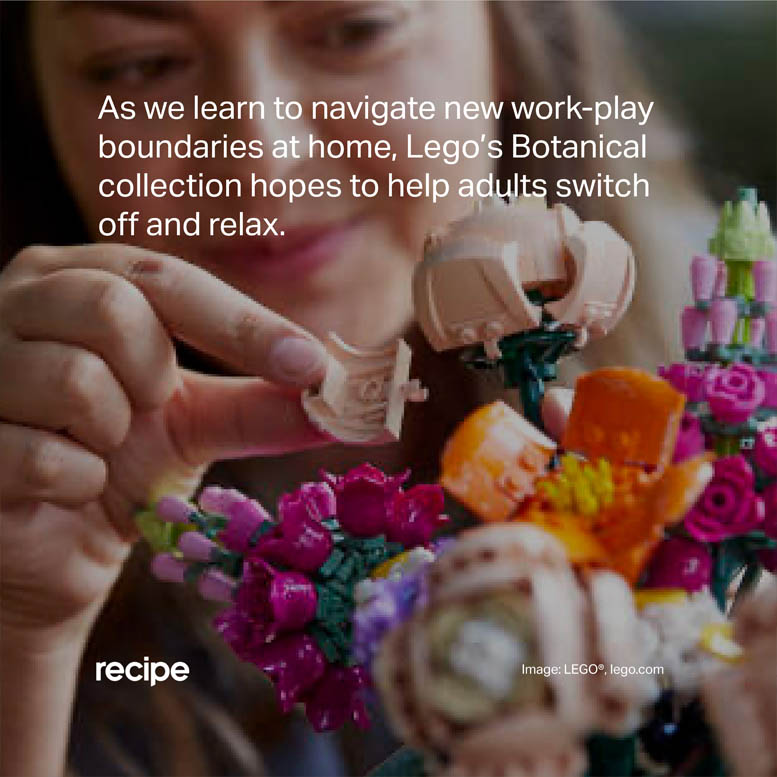
At the start of 2021, Lego released their new Botanical collection branded ‘mindful models for the green-fingered’. The collection features a 756-piece LEGO Flower Bouquet, and a 878-piece Lego Bonsai Tree, both of which include pieces made from plant-based plastic, produced using sustainably sourced sugar cane.
In their Play Well Study last year, Lego found that 73% of adults research ways to de-stress at least once a week, a figure that was likely heightened by the pandemic. Inspired by their finding, Lego created the Botanical collection to enable adults switch off and relax.
We are spending more time at home than ever before. For some, home is now a workplace and a school too, meaning that difficulty switching off is likely to become more prominent. Lego’s Botanical collection offers a delightful and creative solution. How can design continue to help people to navigate new work-play boundaries, and help us to find a sense of peace at home once again?
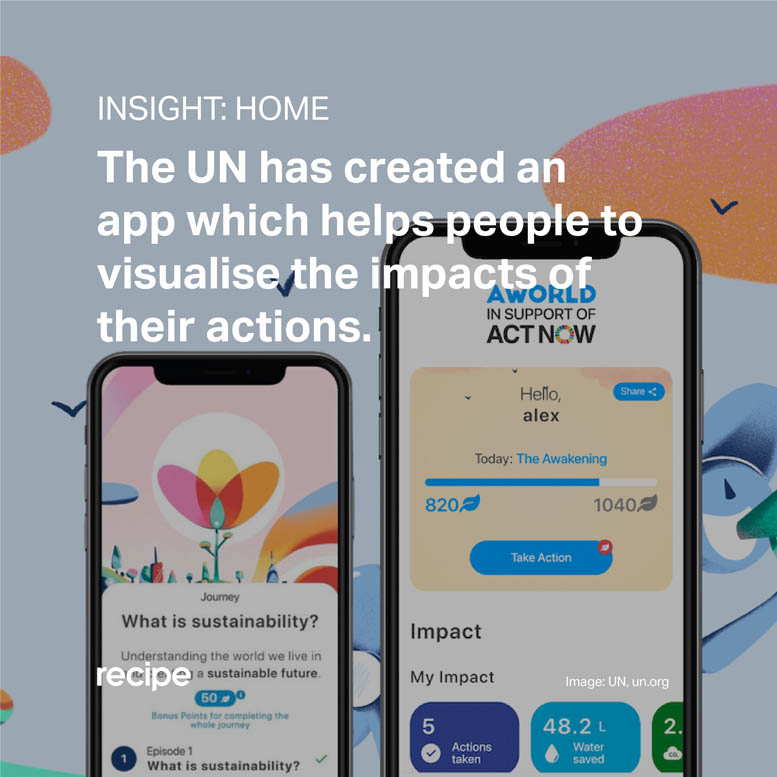
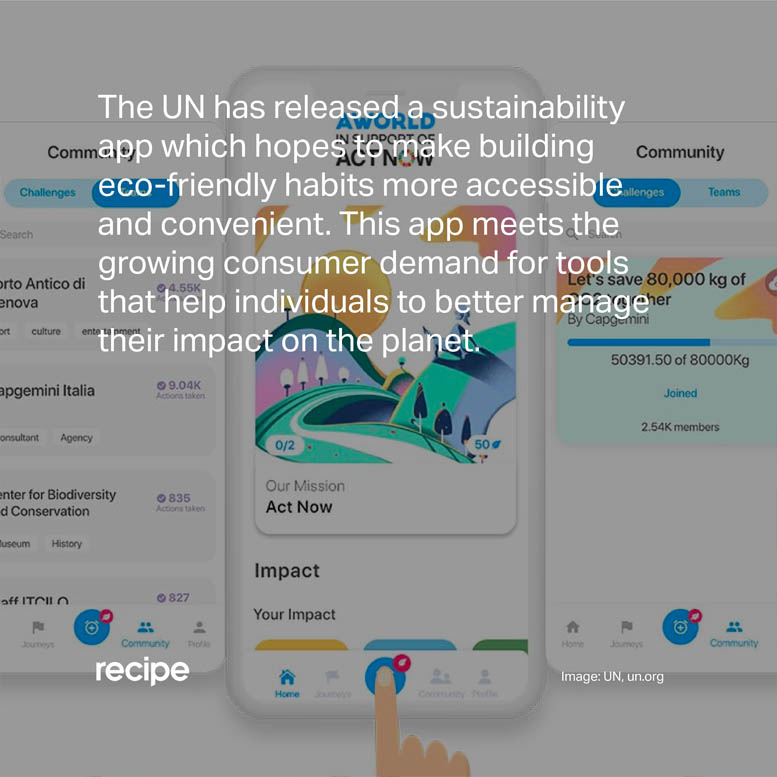
The dangers posed by the climate crisis are becoming more apparent but monitoring our individual impact is often intangible and hard to track, making it difficult to know which choices are best.
To overcome this, the UN has released a sustainability app which hopes to make establishing eco-friendly habits more accessible and convenient. Part of the UN’s ActNow campaign, users are encouraged to take shorter showers, eat plant based meals and reduce single use plastic usage. The impact made from these decisions is tracked and visualised through the CO2, water and electricity being saved. The app also provides tips, quizzes and educational materials.
As the world continues to fight climate change alongside a global pandemic, these initiatives help people us all to ‘build back better’. How can design and technology continue to help make reducing our impacts easier, more tangible and more enjoyable?
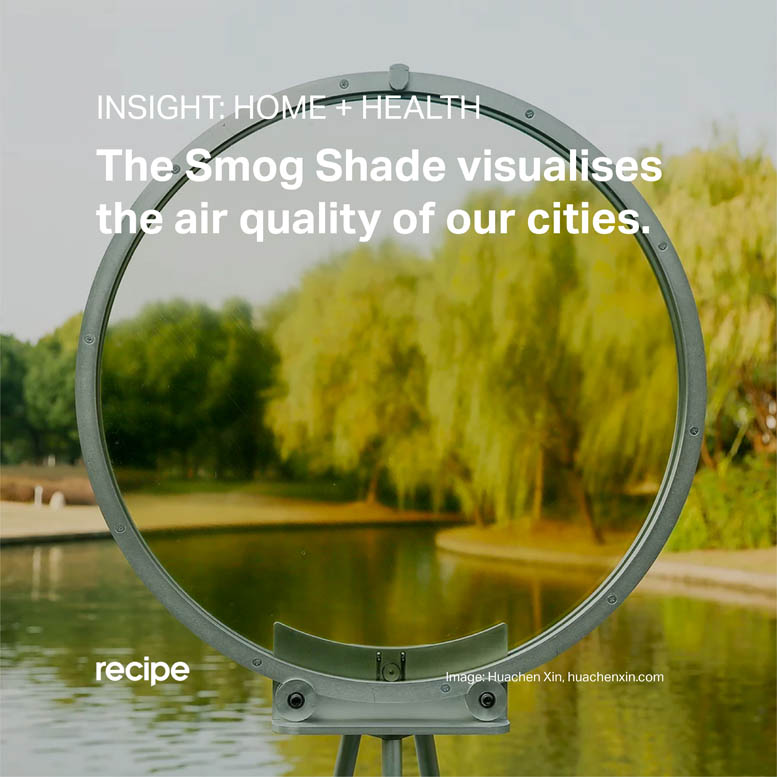
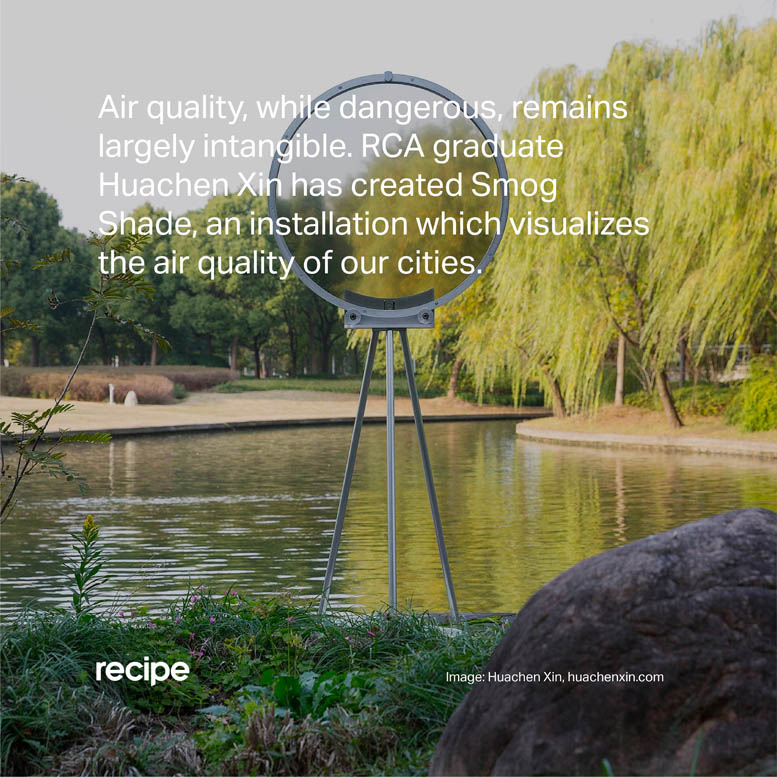
Every week 1.5 million people worldwide move into urban areas. As our cities grow, so does our impact on the quality of our air. The pandemic helped to highlight this, as restricted movement led to a 64% fall in pollution in some parts of the UK.
Whilst dangerous, air quality remains largely intangible, making it hard to visualise and manage. In response to this, RCA graduate Huachen Xin created Smog Shade, an installation which visualises air pollution. By using the polarizing effect, the dish shows the air quality data of different public spaces; the darker the shade, the more polluted the space. The Smog Shade enables access to more accessible, accurate air quality data in occupied environments.
The WHO estimates that over 7 million people die of polluted air annually. It is clear that air quality in cities needs to be addressed. Going forward, how can technology allow us to tackle the dangers presented by polluted air and help us to create healthier cities?
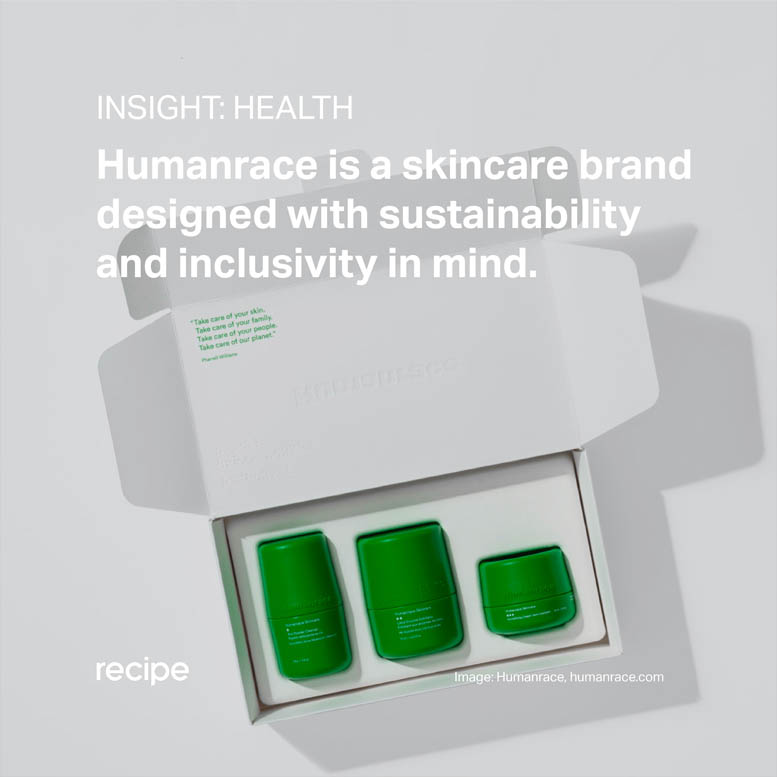
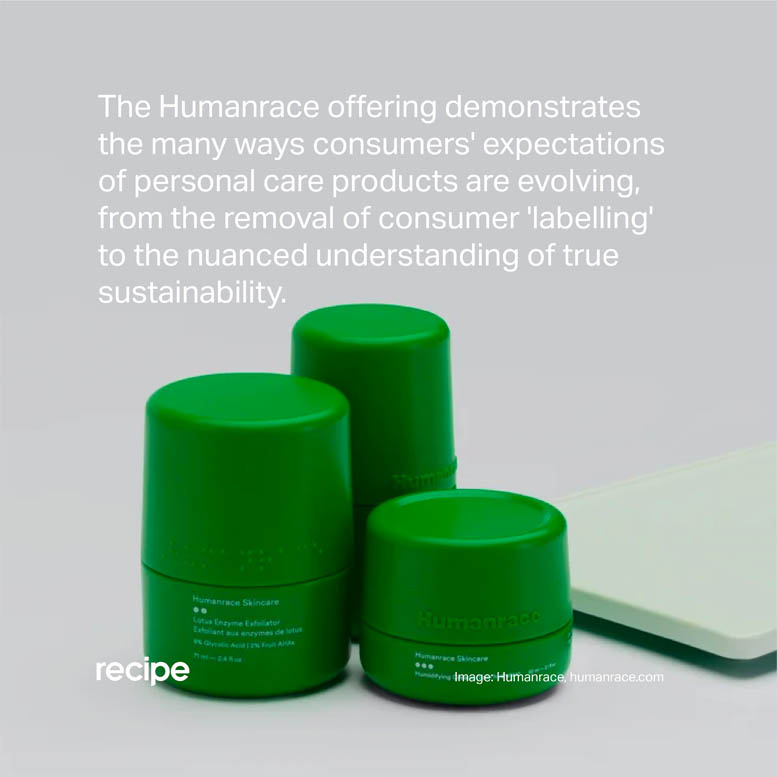
Released late last year and founded by Pharrell Williams, the Humanrace collection includes just three products - a rice powder cleanser, a lotus enzyme exfoliator, and a humidifying cream.
Designed with sustainability and inclusivity as priorities, each product is packaged in a uniquely green casing, made from over 50% post-consumer recycled landfill plastic. They are printed with braille product names and can be refilled with paper cartons which are printed with non-toxic vegetable dyes.
Humanrace combines features that respond to many of the ways consumer expectations of personal care products are changing. From detailed transparency in packaging materials and ingredients to leadership in ethical and accessibility goals. Consumers are increasingly looking for products which align with their own values, with raised expectations for brands that are both responsible and responsive.
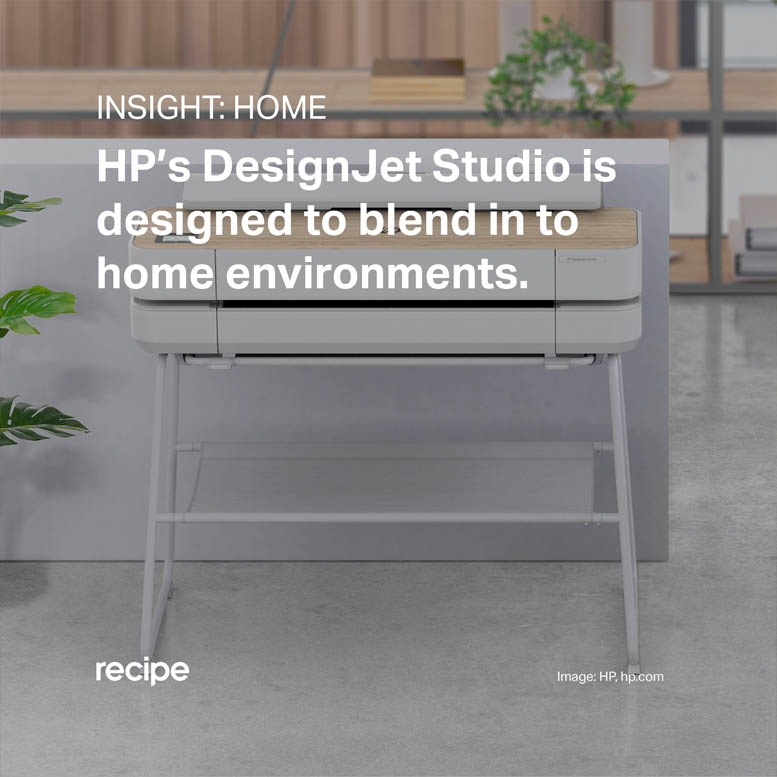
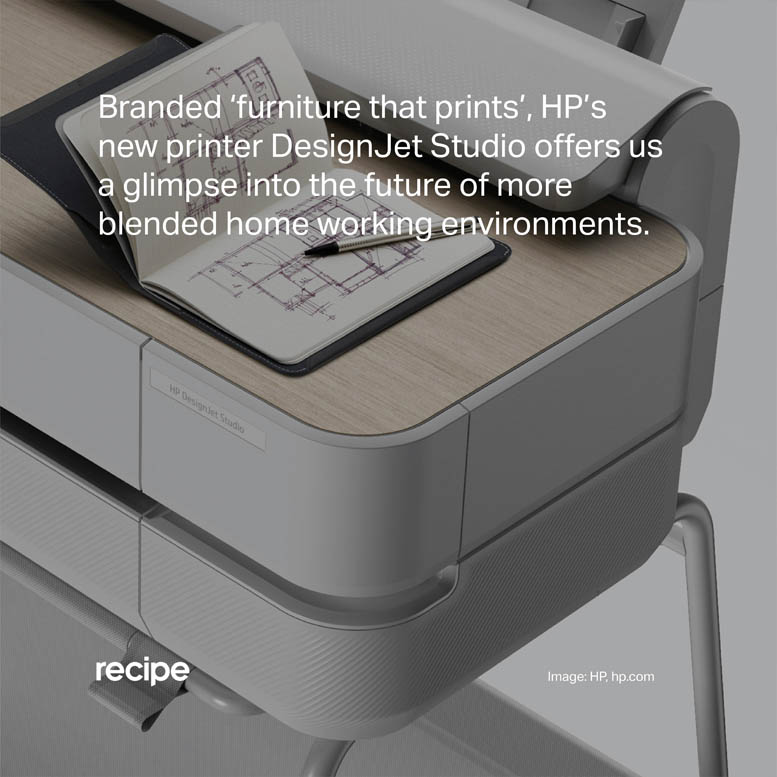
COVID-19 has dramatically shifted the way that we work. Over the past year, up to 50% of the UK’s working population has been working from home. This change is set to stay long after the pandemic. This means that office equipment is coming home with us too, intruding on our home spaces.
Branded ‘furniture that prints’, HP’s new printer the DesignJet Studio offers us a glimpse into the future of work from home environments. Designed to blend in with our homes, the large format plotter sits on an all white frame, featuring a wooden or steel top which can double as a work surface. Unlike its boxy plastic counterparts, this printer doesn’t look out of place in the home, and instead compliments interiors.
It is also the world’s first carbon neutral plotter. HP use various reduction initiatives to reduce their footprint, such as energy efficiency, reduced packaging and use of recycled plastics. This plotter goes one step further, by offsetting the remaining carbon impact created by the raw materials, manufacturing and transportation.
Previous month
February 2021
We began 2021 by attending CES, the world’s largest exhibition of consumer technology. This year, the event was set to look very different, as COVID-19 forced it to move online. Despite this, we were excited to observe many emerging trends that signified changing meanings within home environments, giving us a preview into the home of the future.
Meaning Centred Design Assessment
Meaning Centred Design helps your business understand how people think about, perceive and understand what you stand for and what you have to offer.
MCD Insights can be mapped and translated into new propositions with the potential to make your brand more distinctive, more engaging and ultimately more valuable.
This assessment is an interactive online tool that will help you quickly assess your current situation. It takes less than 5 minutes to compl
